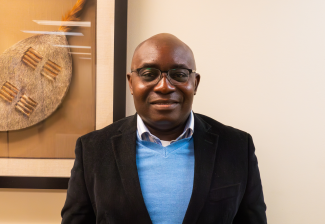
From The Nation Newspaper
Written by Olukorede Yishau
Wale Adebanwi, Presidential Penn Compact Professor of Africana Studies at the University of Pennsylvania’s Department of Africana Studies, is also the Director of the university’s Center for Africana Studies. In this interview with OLUKOREDE YISHAU, Adebanwi gives details about his new book on Aare Ona Kakanfo Gani Adams’s rise in the the Oodua Progressive Congress (OPC) and related matters. Excerpts:
Why did you decide to carry out a study on Gani Adams?
I was tangentially interested in the Oodua Progressive Congress (OPC) as a Yoruba nationalist group when it started because I was, at that time, interested in a long-term study of the Yoruba political elite, primarily the Chief Obafemi Awolowo political movement. However, when the spate of violent clashes within the group—which led to a split—and the clashes between the group and members of other ethnic groups in Lagos started, I began to pay a new kind of attention to the group. This was around 1999. As you know, the group was initially led by Dr. Frederick Fasehun. When the split happened with the then 29-year-old Gani Adams emerging as the leader of his own faction, I became interested in a new way. Perhaps the dominant perspective, particularly in the media, was that the Adams group was dominated by young people who were revolting against “elders,” as represented by Fasehun.
Though this was not completely true, the perspective of youth-versus-elders in the context of the group and the larger social context struck me as a potential theoretically-rich way to approach a study of the group. I was then interested in youth studies. When the youth-versus-elders factor was related to the question of violence, it became even more interesting for me. Therefore, I devoted myself to a more serious study of the group starting with both factions in 1999, to understand the role of social maturation, that is, youth, in relation to violence, and in the context of democratic rule. Remember that Nigeria had just transited to democratic rule in 1999 when this became a major challenge, such that, at a point, President Olusegun Obasanjo issued a shoot-on-sight order to the police regarding members of the OPC. So, I wanted to study the connections among youth, socio-economic crisis, perceived political marginalization, ethno-regional relations, and the democratic struggle. This was the context in which the OPC was formed.
Therefore, I didn’t start wanting to study Gani Adams as a social actor. He was just emerging as a critical social actor at this point, though he was becoming increasingly “popular” or “notorious,” depending on where you stood. However, it was the group dynamics in relation to these other factors that first attracted me as a student of society. I was then teaching Political Science at the University of Ibadan while also working on my first doctoral research which was on the Nigerian press. The focus on the Gani Adams faction of the OPC came later, and the decision to use Gani Adams’ life history as a pathway to the analysis of subalternity, elites, ethno-regional politics, and democratic rule emerged more than one decade after I started the research. It was not until about one and half decades into the research project that it struck me that narrating this particular social life-in-transformation, this unique process of social maturation, and this compelling story of social transformation from a subaltern to an elite, and the intriguing ways in which this could help tell the story of a particular era in Nigerian political history, was too strong for me to resist.
